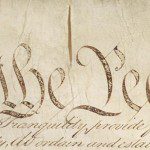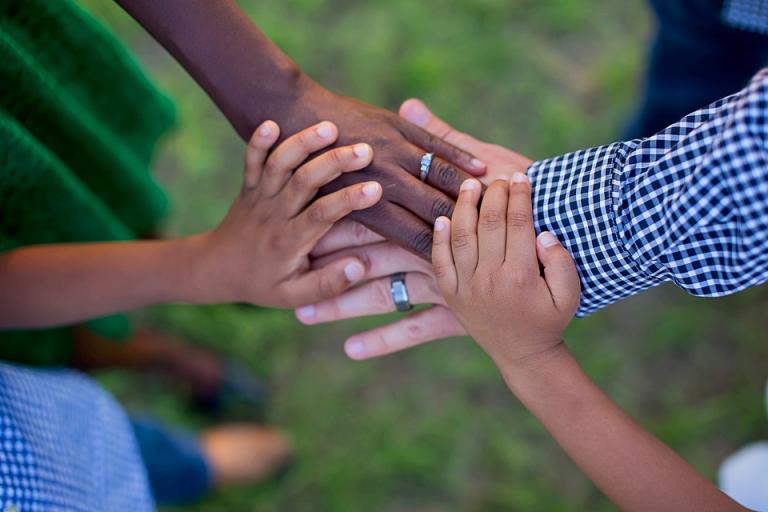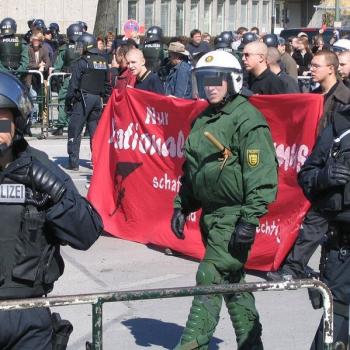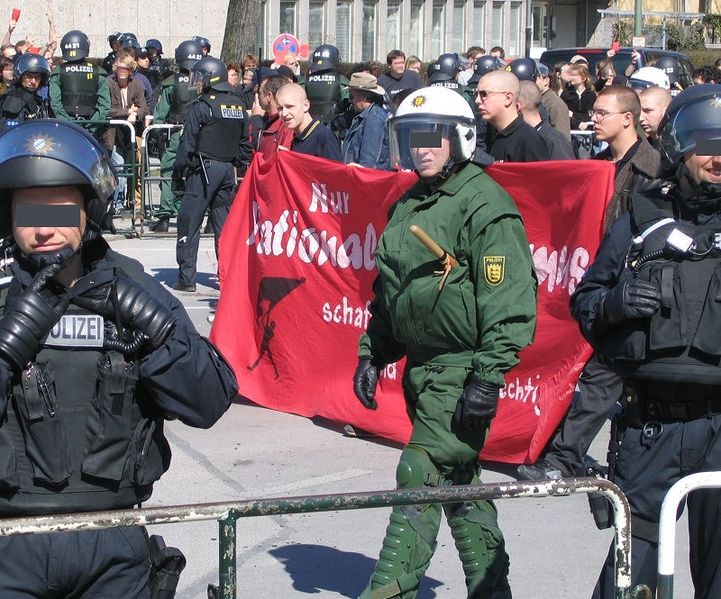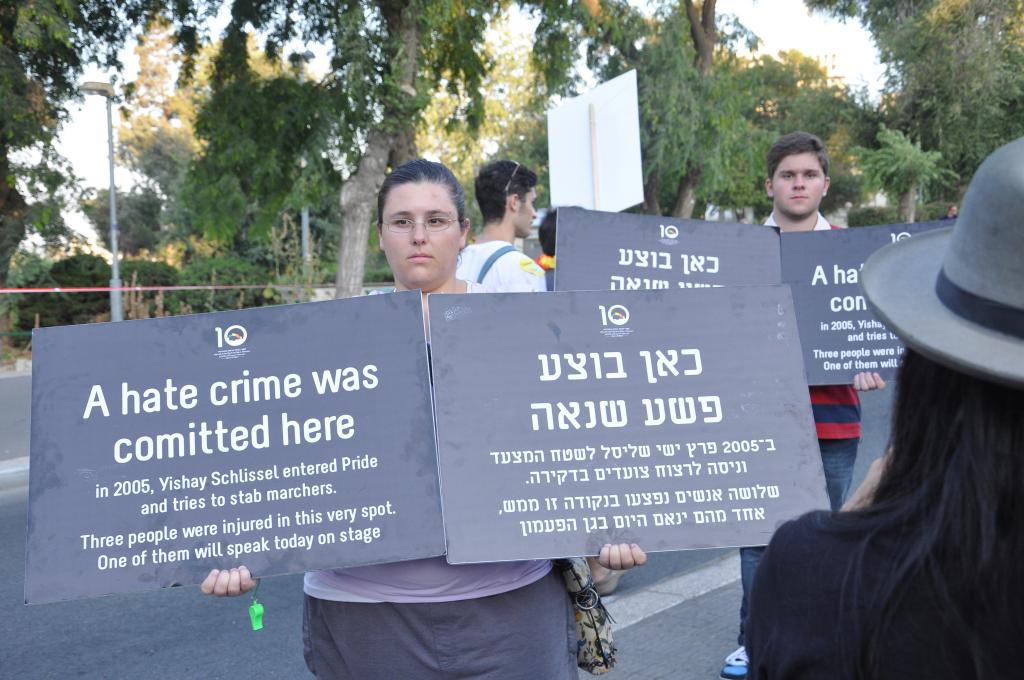
Two items:
On hoaxes: “Racist messages at Air Force Academy were written by student who claimed to be targeted.”
On politics in Venezuela: “Venezuela’s hate crime law seeks to silence political opposition, bishops warn.” The pro-regime defense: “Venezuela’s ANC to Approve New Hate Crime Legislation.”
The statistics: “Latest Hate Crime Statistics Released.” The FBI report itself.
Let’s start with the first: the racist messages left on students’ doors at the Air Force Preparatory Academy turned out not to have been left by a white supremacist after all; instead, it was a black student who thought that by becoming a “victim” he could avoid penalties for some other unnamed misdeed.
Is there a tally of the relative frequency of hoaxes vs. actual misdeeds? Certainly they show up in the news over and over again, and there’s even a website devoted to cataloging them.
For the most part, I’m not a big fan of the concept of the “hate crime.” In general, murder, assault, theft, destruction of property, etc. — even a bomb threat — is equally deserving of punishment if the perpetrator was motivated by hate towards the victim for reasons of ethnicity, religion, etc., or because of a personal dispute or any other reason. I can see, though, that in the case of a “hate crime” there’s a secondary victim, insofar as a murder of a fill-in-the-blank person for reasons of bias causes fear among others of that category in a way that a domestic violence case doesn’t.
The one distinction, I suppose, is the case of vandalism, leaving messages with offensive words as opposed to something bland and generic — though apparently (e.g., in the above-linked article) some collectors of hate crimes deem pro-Trump messages to be “hate.”
And hoaxes? Social justice advocates now have a track record of saying, “even if it was a hoax, it’s still a good reminder to us all to be nice.” But they cause real harm, insofar as they cause people of that minority group to feel that they are threatened. They cause conflict. And they divert resources — both directly, in terms of the time spent investigating the deed itself, and indirectly, when a university is convinced, due to fake hate, that they need to spend even more money on combating it, money that could be spent in more useful ways instead, or just not spent at all, moderating, to whatever small degree, the next round of tuition increases.
Ace at Ace of Spades HQ has some useful commentary on the topic, asserting that
This is not a hoax — this is a hate-crime, or, more accurately, malicious vandalism with the sentencing intensifier of being committed with the intent to spread fear and hatred, just as it would be if a white guy did it.
The fact that a non-white did it does not change those facts — and neither should it change the criminal penalty nor the social opprobrium heaped on the miscreant who did it, unless our nation is prepared to officially declare, unconstutionally but with the authority of Spike Lee, that non-whites are incapable of racism and hence any laws regarding racialized crime apply only to one race.
And, in fact, the student who did this has now left, whether because of this action or his prior misdeed, but his name is unknown; he is being given anonymity, which would not be afforded a white perpetrator.
The Tribune article reports,
Using a ProPublica database, BuzzFeed News found 154 total incidents of hate speech at more than 120 college campuses nationwide. More than two-thirds promoted white supremacist groups or ideology, while more than a third cited Trump’s name or slogans, BuzzFeed News reported.
Yet authorities caught less than 5 percent of perpetrators in cases of vandalism or threats. In at least three instances, college officials determined the incident was a hoax, according to BuzzFeed News.
Reason has more on this ProPublica/Buzzfeed News report, which further lists examples of some of the incidents, such as:
a Latina student returned to her dorm to find that her roommate had built a makeshift wall between their beds, alongside a note that read, “Trump won so here is a little preview of what’s to come.”
and
At Iowa State University less than a week after the inauguration, business cards were left in the campus library stating: “America was 90% white in 1950. It is now 60%. MAKE AMERICA GREAT AGAIN. Trump is the first step, we’re next!”
So the obvious math is this: 154 * 5% = 7.7. “At least” 3 (what does that even mean?) out of 7 or 8 identified perpetrators were hoaxers. But that 5% is so small, and the “incidents of hate speech” so broadly defined (was their ongoing antagonism between the roommates, for example?), that this whole thing doesn’t really provide any real information.
And recall the Jewish community center bomb threats back immediately after the election, which turned out to be the work of a Jewish man in Israel. So far as I know, we never learned his motivation but he sure wasn’t a neo-Nazi.
What about Venezuela? Yes, of course, there’s the whole context of a country in which the ruler is assuming increasingly dictatorial powers. And slippery-slope arguments are always somewhat suspect — either a thing is wrong in itself, or it isn’t. But it’s still unsettling as an example of the consequences of using the concept of “hate crimes” to control one’s opponents. The pro-Maduro site says the law was necessary to put an end to instances such as anti-government protests in which (suspected) pro-government individuals were attacked, but the Catholic bishops in the country say the aim is much greater.
The president of the Venezuelan bishops’ justice and peace commission has criticized a hate crimes law passed on Thursday, charging that its aim is to silence those opposed to the socialist government of Nicolas Maduro.
The Law Against Hatred and Fascism, the Nov. 2 legislation passed by the Constituent Assembly, will be used by Maduro’s government against the opposition “so we can’t even speak or protest,” Emeritus Archbishop of Coro Roberto Lückert Leon told ACI Prensa.
Does the example of Venezuela necessarily prove that hate crime laws will be used to silence government opponents, or that hate crime accusations will be used to silence the political opponents of the accuser? No, of course not. But some of the claims of “hate” that have been tossed around, such as the incident in which “Trump 2016” chalk sidewalk messages at Emory University were deemed to be offensive, tend toward that direction.
What about the FBI statistics? The FBI has a table breaking down known offenders by type of crime and race/ethnicity. It’s not as crystal clear as “white racists” — in the category of assault, only 51% of perpetrators where classified as “white”, with 27% black, 2% each Asian or American Indian, 9% a group of assailants of multiple races, and 10% unknown (which seems odd as I would assume that this would be part of reporting data; perhaps “race” was based on self-reporting, but I would assume a bureaucrat would identify race when it was visibly obvious so that “unknown” represents “not white, but dunno what exactly”). On the other hand, “intimidation” perpetrators were 67% white, 17% black.
And the types of crimes? They report that
- 26.9 percent were intimidation.
- 24.7 percent were destruction/damage/vandalism.
- 24.6 percent were simple assault.
- 12.8 percent were aggravated assault.
- And the remainder are “other,” of various sorts.
But the statistics are just that, shorn of any details about the circumstances — or, at least, I can’t find any place on this site in which one can see examples of “intimidation” crimes or vandalism, for instance, to see how broadly these crimes are defined. How many of these are the “stereotypical” hate crime, in which a turban’d Sikh is shot because of that clear faith identifier? How many of these are more muddled, in which bias is one of a confluence of motivations, mixed in with generic criminality? How many are like the Matthew Shepherd case, in which the victim’s clear “minority” status causes everyone to assume the reason is bias (in this case, it turned out to be drug-related)? And how much of the claimed increase in hate crimes recently is a matter of true increases vs. reporting increases? (An ADL press release I came across simultaneously cites a year-over-year increase and at the same time urges greater reporting.)
It’s a mess. Attacks against individuals because of their race, ethnicity, religion or other characteristics, are bad. Hoaxes, or too-quick identification of an incident as a hate crime prior to learning the motivation, are troubling and counter-productive. And I don’t see any progress here.
So I’ll finish with my usual request. Readers, do you have any experiences?
UPDATE: shortly after publishing, I learned from Instapundit that the 2016 statistics are now available, with a 5% increase from 2015. I haven’t looked at the details, but wanted to mention it rather than leave readers wondering why I’ve got old data.
Image: from https://www.flickr.com/photos/neilward/7700722864



